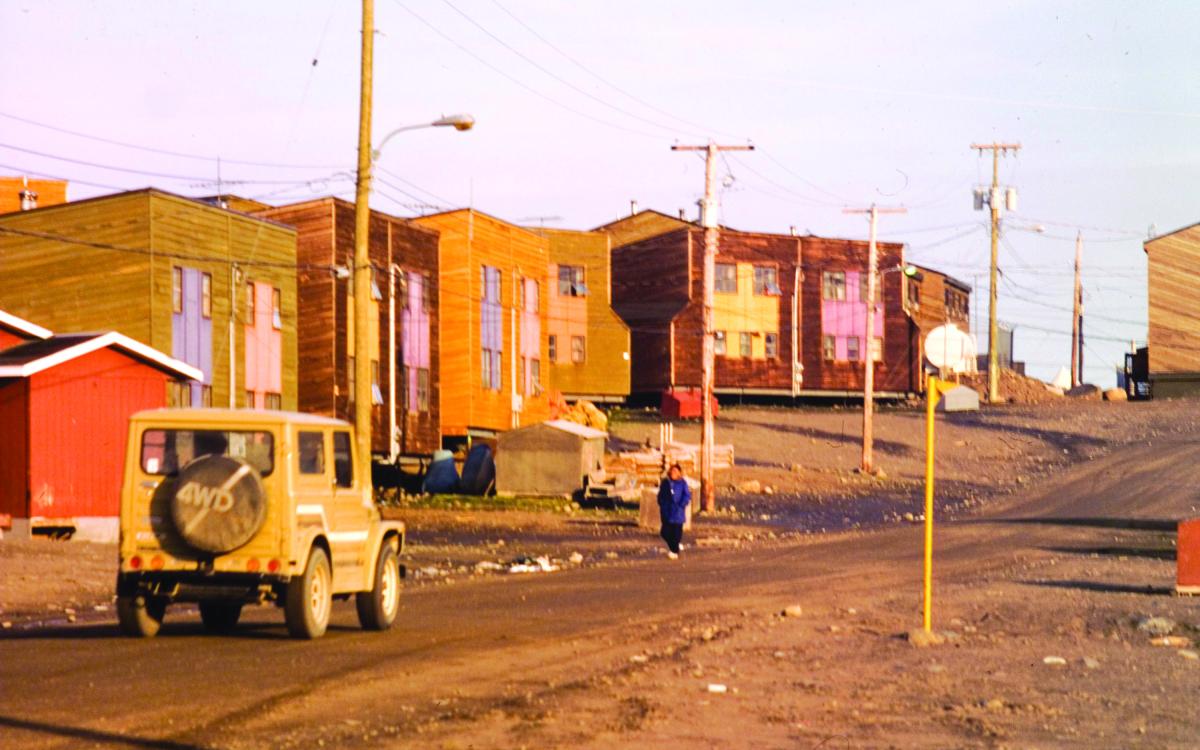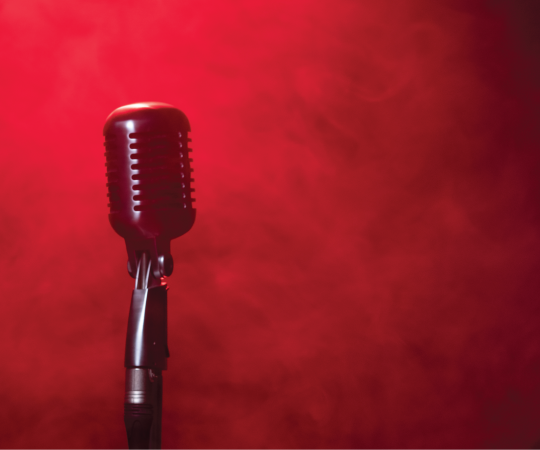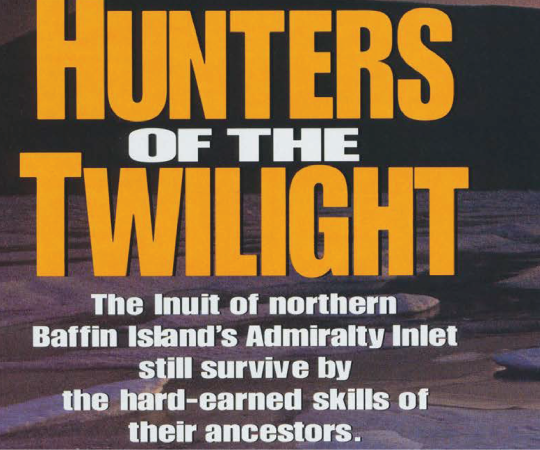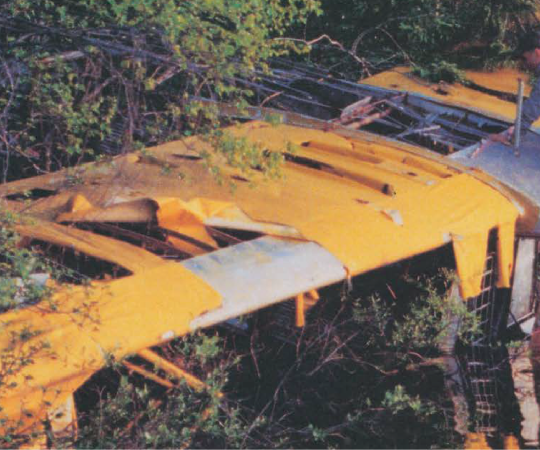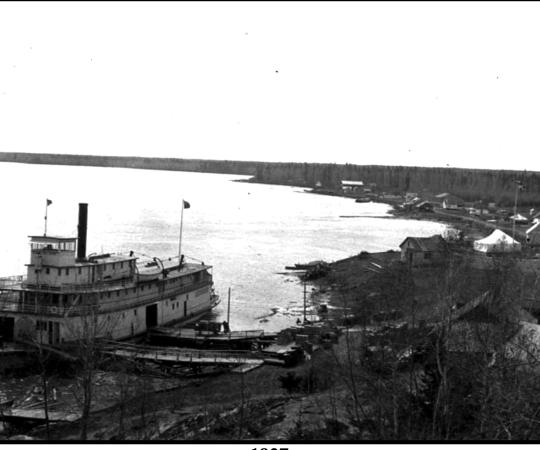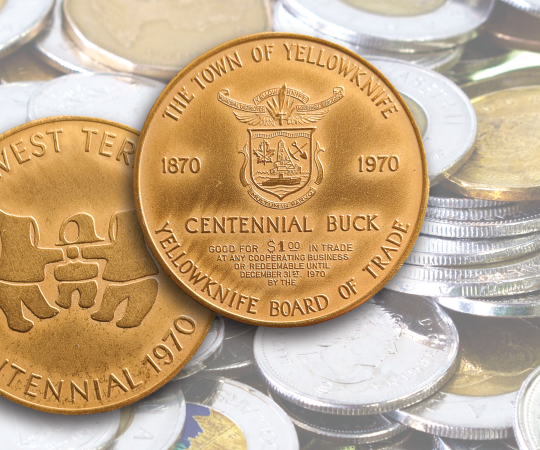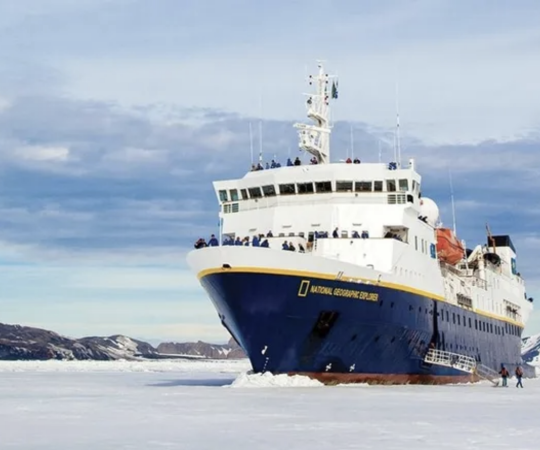Fiona Paton took a deep breath. With her foot on the clutch, she put the jeep into gear. It stalled.
Telling her not to get discouraged, her father Jack, in the passenger seat, said to try again. She calmed herself with another breath, then pressed down on the clutch and put the jeep back into gear. This time, it smoothly sailed down the gravel road.
It was around 1980 and Paton was a teenager learning to drive the roofless jeep her father had bought after the U.S. Army left it in Iqaluit. It was one of many vehicles her father, a general contractor, had purchased from the military. In fact, Jack had amassed quite the collection, with vehicles he also procured from southern car dealerships. These ranged from the army jeep, to a bright yellow Gran Torino station wagon (known in town as the Yellow Submarine), to the two-tone Ford LTD (complete with vinyl interior) that chauffeured Queen Elizabeth II around town in 1970.
“He was proud of the fact that the Queen [had been driven around in his car],” says Paton. “He’s originally from Scotland and his mother was a very big royal fan, so it was an honour for him.”
Iqaluit, then known as Frobisher Bay, was only recognized as an official settlement during the Queen’s visit in 1970. But it had been steadily growing for three decades. The U.S. Air Force chose the area for a major airbase in 1942, so it could ferry aircraft from North America to Europe during World War II. Many Inuit began to settle near the base.
When it closed in 1963 and became a civilian airport, military vehicles stayed behind and were scooped up by people like Jack Paton, one of the first residents to drive a privately-owned vehicle in Iqaluit.
For a short time, the cars rumbling around town were exclusively military jeeps and trucks, along with the few trucks owned by the Catholic Church mostly in muted colour.
In those early days, the vehicles that didn’t belong to the church or come from the U.S. Army certainly stood out. “I drove a Volkswagen mini-bus in 1965-66 on a regular passenger service around Iqaluit and Apex,” says Jim Taylor, a former resident who now resides in Ontario. “It had a gas-fired heater mounted under the driver’s seat. Scary!” Taylor also remembers Bryan Pearson driving around in a vehicle without a driver’s-side door, with his huge Newfoundland dog sitting on the passenger seat.
But by the 1970s, more and more residents started to ship up their own cars by sealift, often picking out vehicles while travelling down south. Many were old beaters that got souped up by mechanics in town. That’s when transportation in Iqaluit went from utilitarian to flashy.
David Boileau, whose family moved to Iqaluit in 1963, says unique vehicle choices were probably motivated by having “something special, unique and different—and most likely to impress fellow Frobisherites.” It was, after all, the first car for many residents. This showy desire was part of why he bought himself a “pimped up” Plymouth Fury in 1975, after it had served a stint as a cab.
“Back then, gas wasn’t such an issue, so cab companies used to get the big, bossy Furies and the big Chevies,” says Boileau.
(Russian Lapa station wagons were also put to work as cabs. Many Iqaluit residents recall how big the square vehicles were inside, with 10 people often piling in at a time “like sardines,” says Joe Hess, a former cab driver.)
For $1,500, Boileau purchased the Fury from mechanic Rodrigue Levesque, who gave it a new coat of matte black paint, put the shift stick on the floor and even added hydraulics. It came with a peace sign sticker on the bumper, above the polar bear-shaped license plate.
The Fury was a fun—albeit rough—ride, says Boileau, given the car was a lowrider and there were no paved roads in town at the time. It was one of many muscle cars cruising around Iqaluit in the 1970s, alongside a Ford Torino, and an El Camino. When Boileau drove his Fury around at night, people complained about the noise.
His car even played a role in the 1977 film Nanook Taxi, which followed the protagonist Ningiuksiak who becomes a cab driver to support his family after his snowmobile breaks down during a hunt. Boileau’s Fury was the cab Ningiuksiak, played by Joanasie Salomonie, drove around in.
Today, Boileau gets around in a 1991 GMC Sierra. He doesn’t feel the need for a loud muscle car now that he’s no longer in his early 20s and in a progressive rock band, covering Deep Purple, Santana and The Cars.
Boileau’s still involved in the local music scene, rigging the lighting and doing audio setup for concerts and events, but he lives a less flashy lifestyle. A Plymouth Fury wouldn’t really serve him today. “These days it would probably just be for looks and would just be parked. It might be nicer to have down south, but up here I think it’s a waste now.”
Nowadays, Iqaluit roads cater to more practical rides—pick-up trucks, SUVs and snowmobiles in winter. It only makes sense that people choose vehicles that are easier on gas and can handle the colder temperatures.
But every now and then, when a sports car rips across a gravel road, it brings back memories from a different time.

